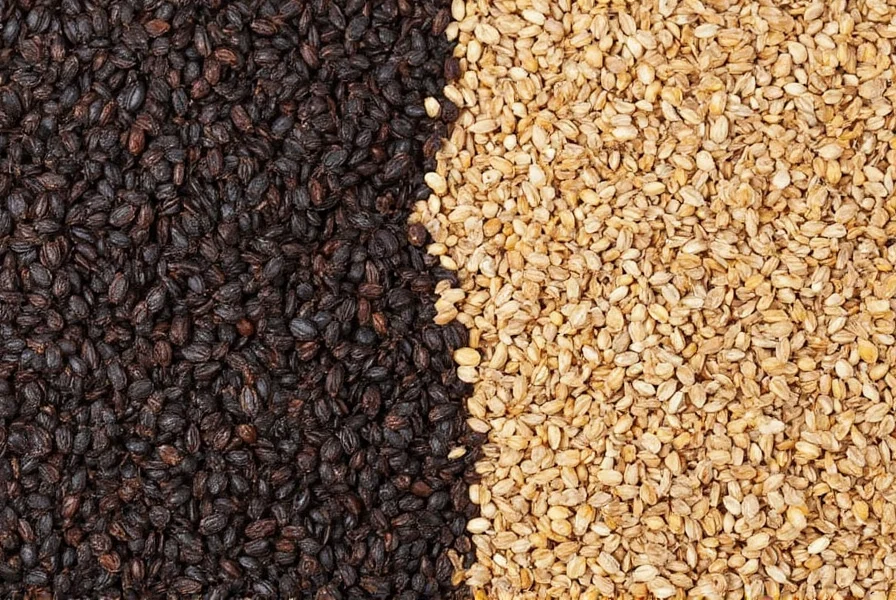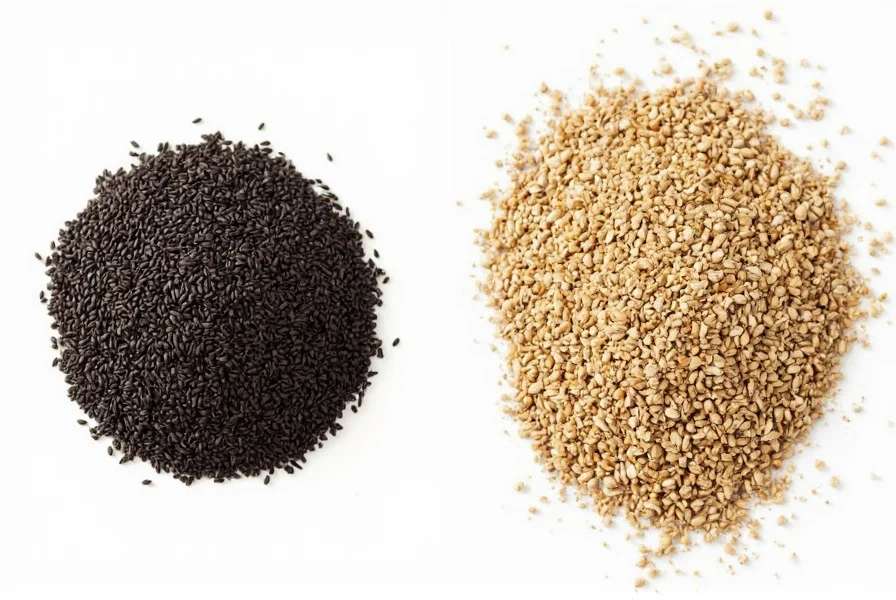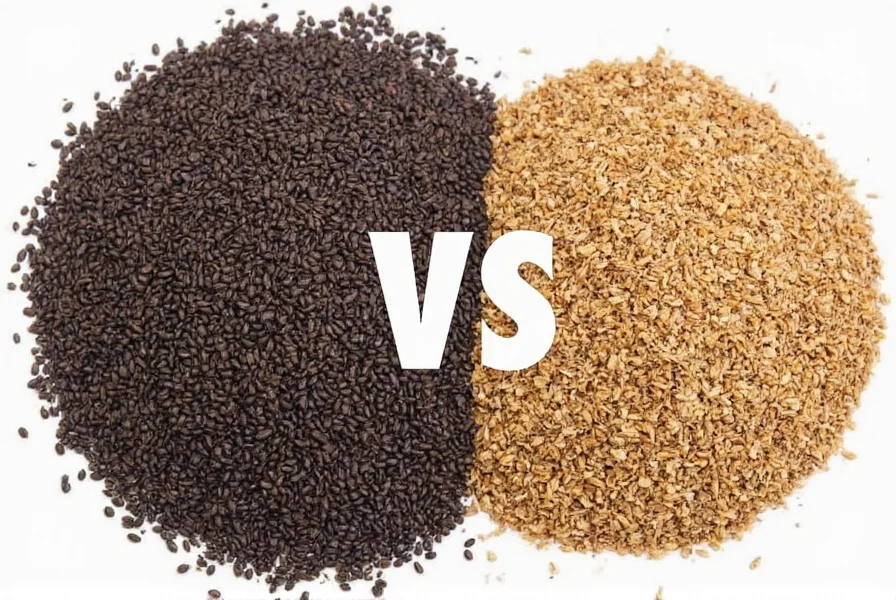Many people searching for black seed cumin seed are actually trying to understand the relationship between these two spices, which are frequently confused due to similar-sounding names. This confusion stems from the fact that Nigella sativa is sometimes called "black cumin" or "kalonji" in certain culinary traditions, while true cumin (Cuminum cyminum) is a completely different plant. Understanding the distinction between these spices is essential for both cooking accuracy and potential health applications.
Botanical Identity and Naming Confusion
The primary source of confusion lies in naming conventions across different cultures. Nigella sativa, commonly known as black seed, black cumin, or kalonji, belongs to the Ranunculaceae family. Meanwhile, Cuminum cyminum, known simply as cumin, is part of the Apiaceae family. Despite both being used as spices, they are botanically unrelated.
Black seed has been referenced in historical medicinal texts, including those attributed to Prophet Muhammad, as "the remedy for all diseases except death." This historical significance has contributed to its popularity in traditional medicine systems across the Middle East and South Asia.
| Characteristic | Black Seed (Nigella sativa) | Cumin Seed (Cuminum cyminum) |
|---|---|---|
| Also Known As | Black cumin, kalonji, habbatul barakah | Jeera, cummin, Roman coriander |
| Color | Jet black to dark gray | Light brown to yellowish brown |
| Shape | Teardrop-shaped, matte finish | Elongated, ridged, curved |
| Flavor Profile | Earthy, slightly peppery, onion-like | Warm, earthy, slightly bitter |
| Primary Culinary Regions | South Asia, Middle East | Mediterranean, Middle East, Latin America |
Physical Characteristics and Identification
When examining black seed vs cumin seed side by side, the differences become apparent. Black seeds are small, matte-finish teardrop-shaped seeds that range from jet black to dark gray. They have a subtle aroma reminiscent of onions or oregano. Cumin seeds, by contrast, are light brown to yellowish-brown, elongated with visible ridges, and have a distinctive warm, earthy scent.
One practical test for distinguishing between the two involves water: black seeds will float when placed in water due to their oil content, while cumin seeds will sink. This simple identification method helps prevent culinary mistakes when recipes specifically call for one or the other.
Culinary Applications and Substitution Guidance
Understanding the difference between black seed and cumin seed is crucial for authentic cooking. Black seed (kalonji) features prominently in Indian, Pakistani, and Middle Eastern cuisines, often used in breads like naan, pickles, and certain curry blends. Its flavor is more subtle than cumin and works well in both savory and some sweet applications.
Cumin seed, with its stronger, warmer flavor profile, serves as a foundation spice in many global cuisines. It's essential in chili powder, taco seasoning, curry powders, and Middle Eastern spice blends like baharat. When recipes specify "cumin," they always mean Cuminum cyminum, not black seed.
While substitutions are sometimes necessary, it's important to note that black seed cannot adequately replace cumin in recipes requiring cumin's distinctive flavor, and vice versa. In emergencies, caraway seeds offer the closest approximation to black seed, while coriander seeds can somewhat mimic cumin's earthiness.
Research-Backed Health Properties
Both spices have been subjects of scientific research for their potential health benefits, though the compounds and mechanisms differ significantly. Black seed contains thymoquinone, which numerous studies suggest may have antioxidant, anti-inflammatory, and immune-modulating properties. Research published in the Journal of Ethnopharmacology indicates potential benefits for respiratory health and metabolic function.
Cumin seed, rich in cuminaldehyde and other compounds, has been studied for potential digestive benefits and blood sugar regulation. A review in Critical Reviews in Food Science and Nutrition highlighted cumin's traditional use in supporting digestion and its potential anti-diabetic effects.
It's important to note that while both spices show promise in preliminary research, neither should be considered a replacement for medical treatment. The health benefits of black seed oil and cumin supplements should be approached with realistic expectations based on current scientific understanding.
Purchasing and Storage Recommendations
When shopping for either spice, look for whole seeds rather than pre-ground versions to ensure maximum freshness and flavor. For black seed, seek out seeds that are uniformly dark with no signs of moisture or clumping. Cumin seeds should be a consistent light brown color with a strong, pleasant aroma.
Proper storage extends the shelf life of both spices. Keep them in airtight containers away from light and heat. Black seeds maintain their potency for about 1-2 years when stored properly, while cumin seeds last approximately 1-1.5 years. For optimal flavor, toast whole seeds briefly in a dry pan before grinding or using in recipes.
Traditional Uses Across Cultures
The historical use of black seed spans millennia, with references in ancient Egyptian, Greek, and Islamic medical traditions. In South Asia, it's commonly called "kalonji" and used as a finishing spice for breads and certain vegetable dishes. Middle Eastern cultures often incorporate it into cheese preparations and flatbreads.
Cumin has equally ancient roots, with evidence of its use dating back to ancient Egypt and Rome. It features prominently in Mexican, Indian, North African, and Middle Eastern cuisines. In traditional medicine systems, cumin has been used to support digestion and as a natural remedy for various ailments.
Practical Cooking Tips
When working with black seed, remember that its flavor is more delicate than cumin's. It works best as a finishing spice or added early in bread-making processes. In Indian cuisine, it's often tempered in hot oil at the beginning of cooking to release its flavor into the dish.
For cumin, dry roasting whole seeds before grinding enhances their aromatic compounds. Cumin's stronger flavor means it can stand up to longer cooking times, making it suitable for stews, braises, and spice blends that require extended preparation.

Addressing Common Misconceptions
One persistent myth is that black seed and cumin seed are varieties of the same plant. This is incorrect—they belong to different plant families with distinct genetic profiles. Another misconception is that black seed oil can cure serious medical conditions; while research shows promise, current evidence doesn't support such definitive claims.
When exploring the black cumin seed vs regular cumin debate, it's essential to rely on botanical classification rather than colloquial naming conventions. The term "black cumin" for Nigella sativa creates unnecessary confusion with true cumin, leading to frequent misidentification in both culinary and health contexts.

Conclusion
Understanding the distinction between black seed (Nigella sativa) and cumin seed (Cuminum cyminum) enhances both culinary precision and informed decision-making regarding potential health applications. While both spices offer unique flavors and potential benefits, they serve different purposes in cooking and traditional medicine. By recognizing their botanical differences, physical characteristics, and appropriate uses, home cooks and health-conscious individuals can make more informed choices when incorporating these spices into their lives.
Frequently Asked Questions
Can I substitute black seed for cumin in recipes?
No, black seed and cumin seed have distinctly different flavor profiles and are not interchangeable in recipes. Black seed has a more subtle, slightly peppery flavor with onion-like notes, while cumin has a stronger, warmer, earthier taste. Using one in place of the other will significantly alter the intended flavor of the dish.
Is black seed the same as black cumin?
Yes, black seed (Nigella sativa) is commonly referred to as black cumin in many culinary traditions, particularly in South Asia. However, it's important to understand that this is a naming convention only—black seed is botanically unrelated to true cumin (Cuminum cyminum). This naming overlap causes frequent confusion between the two distinct spices.
What are the primary health benefits associated with black seed?
Research suggests black seed (Nigella sativa) contains thymoquinone, which may have antioxidant and anti-inflammatory properties. Some studies indicate potential benefits for respiratory health, metabolic function, and immune support. However, these findings are primarily from preliminary research, and black seed should not be considered a replacement for medical treatment for any health condition.
How can I tell the difference between black seed and cumin seed visually?
Black seeds are small, matte-finish teardrop-shaped seeds that range from jet black to dark gray. Cumin seeds are light brown to yellowish-brown, elongated with visible ridges, and have a curved shape. When placed in water, black seeds will float due to their oil content, while cumin seeds will sink.











 浙公网安备
33010002000092号
浙公网安备
33010002000092号 浙B2-20120091-4
浙B2-20120091-4